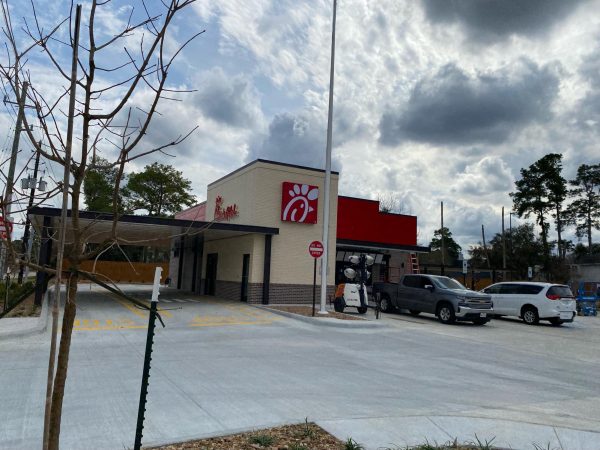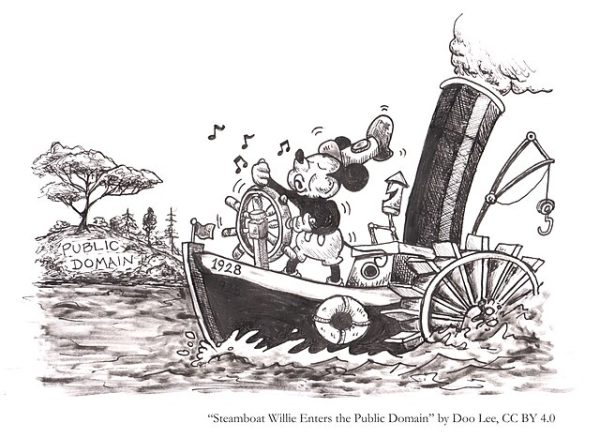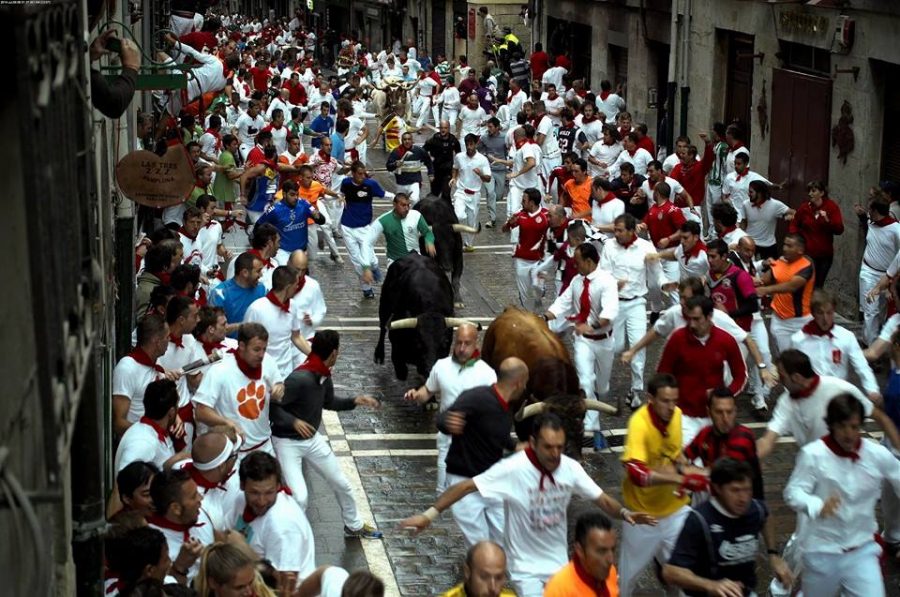The Bulls Run Again
Spain’s running of the bulls festival begins
Participants run through the streets of Spain during the Running of the Bulls festival.
Once again, the time of year has come for the Running of the Bulls throughout Spain and Portugal where cattle are released to run through designated parts of cities with hundreds of participants running in front of them. Starting on July 6, the various races go on for the next week until the final race on July 14. Thousands of people from around the world travel to the Iberian Peninsula every year to watch or participate in this festival.
Originally, cattle ran through the streets of towns and cities during the early 14th century to be transported from fields outside of the town to the bullring where they were killed later that day. Herders would use various tactics including prods and other fear tactics to speed up the process. Soon, teens made it into a race to show off their bravado by running in front of the cattle and make it safely to the pens first. Eventually, it was made a part of the nine-day festival Sanfermines in honor of Saint Fermin as its popularity grew.
Traditionally, the participants sing a benediction before the race in Spanish and Basque (a language native to the region west of the Pyrenees Mountains) to a statue of Saint Fermin asking for protection during the race and his blessing. Then, at 8 a.m., a rocket goes off signaling the opening of the corral followed by a second marking the release of the bulls and officially beginning the race. Participants begin to run the 957 yard course trying to stay ahead of the bulls and jumping out of the way when necessary. The pack of bulls have an average speed of 15 miles per hour. Once the race ends, two more rockets go off to signal the bulls have entered the bullring and their respective corrals. On average, there is two and a half minutes between the first and last rocket.
Runners must be at least 18 years old to participate in the race in order to ensure that runners physically able to stay in front of the bulls, but every year 50 to 100 people are injured in the Pamplona one alone with several Americans already injured this year. In the past century, 15 people have been killed with the most recent being in 2009. To prevent injuries from occurring, fences are set up for runners to jump on top of to escape the bulls, and medical stations are spread throughout the course by the Red Cross to ensure immediate medical attention to injured runners. Also, the Red Cross employs up to 20 ambulances to transport injured runners to a local hospital in less than ten minutes. Despite these efforts, the Running of the Bulls is still a dangerous race.
The Running of the Bulls still has seven days left of races to go, so if you would like to see this year’s races, they can be viewed on RTVE, the public Spanish national television channel, along with several videos on social media. Also, if you would like to learn more about the Running of the Bulls, check out the 2012 documentary Running With Bulls.













